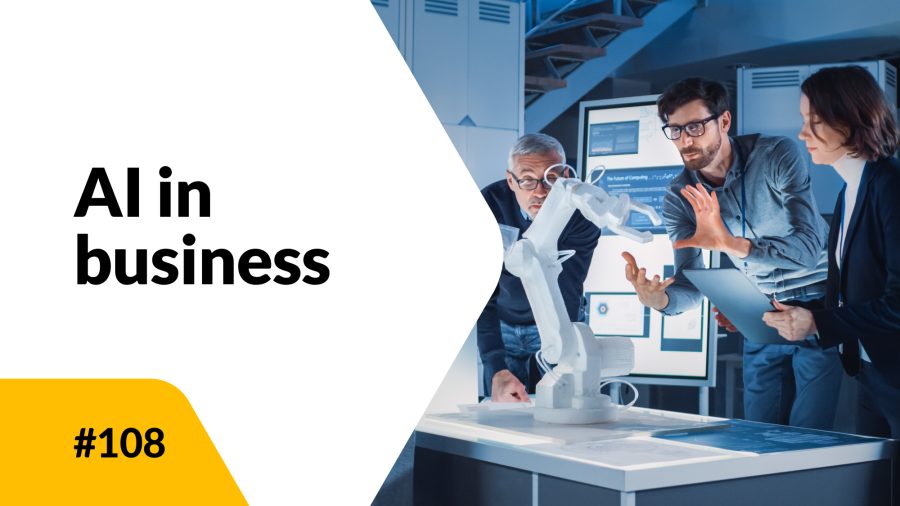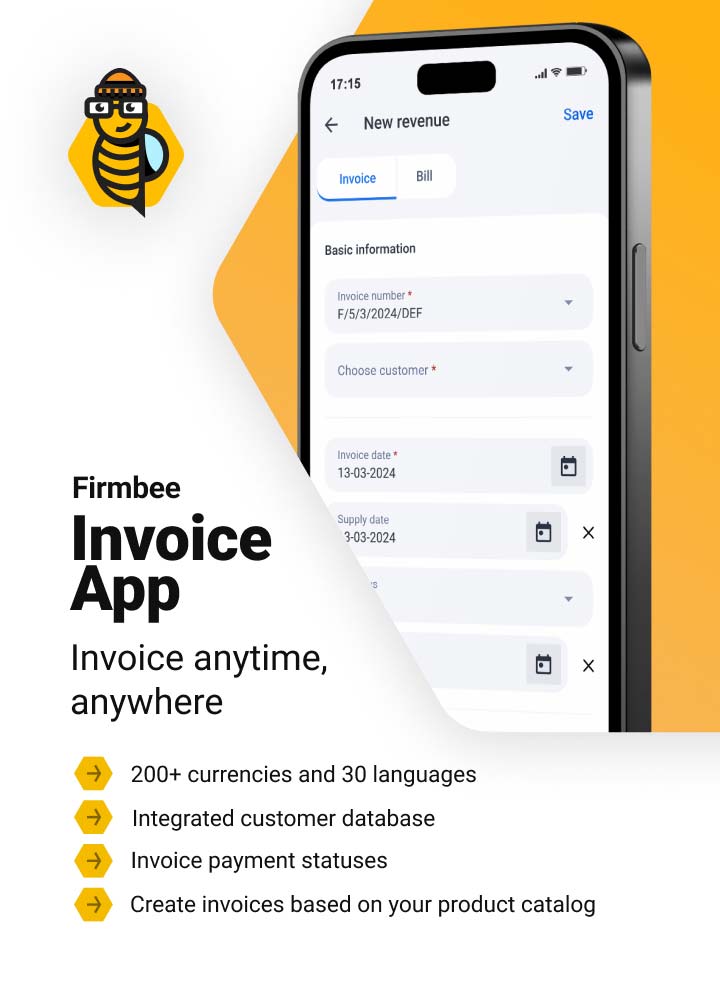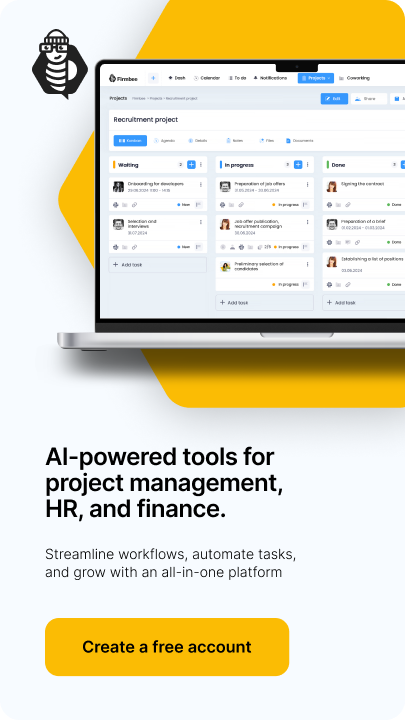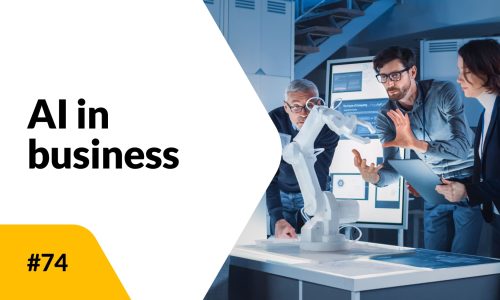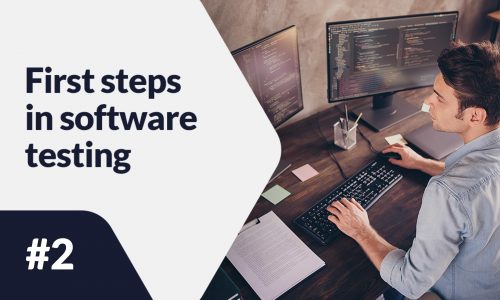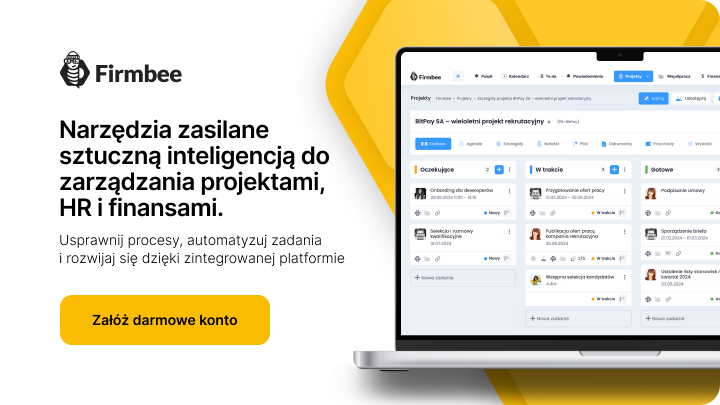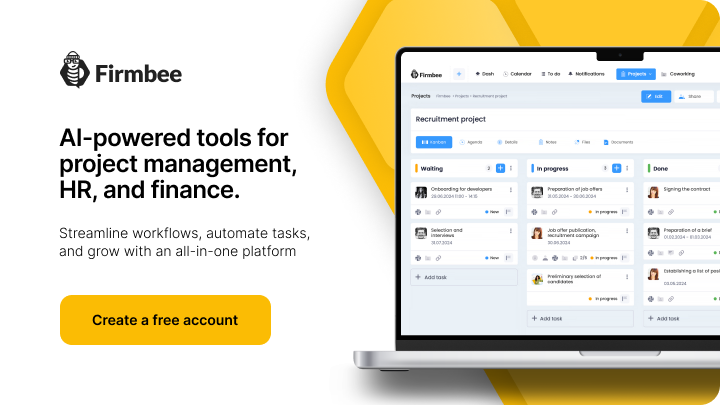Artificial intelligence is impacting the job market today. While many fear that AI will “take away” jobs, the issue is not as clear as it may seem. Many experts say that AI will create even more growth opportunities for both employees and entrepreneurs. One thing is certain – the skills needed to perform work in many occupations are changing very rapidly. According to the Future of Work Report, by 2030, the skill set necessary to do intellectual work will change by 65%. Meanwhile, more than half of LinkedIn users currently work in jobs that will be significantly transformed by artificial intelligence. This is a true revolution that has already begun. So how do you prepare your company for the coming AI era? Read on to find out more.
AI and the future of work - table of contents
- What will NOT change in business in the AI and the future of work?
- Automation or augmentation. Two approaches to AI
- Training and developing employees’ skills in the AI era
- How is AI changing the approach to recruitment and talent management?
- Strategies for implementing AI in small and medium-sized enterprises
- Summary: AI and the future of work
What will NOT change in business in the AI and the future of work?
It is estimated that by 2025, AI will eliminate about 85 million jobs but create 97 million new ones. Employees who combine creative skills with technical and soft skills will still be needed. In a nutshell, they will guide the development of technology in line with corporate values and customer needs. This will certainly require excellent communication skills – both with people and, increasingly, with AI.
Moreover, responsible business decisions will still probably be made by humans. AI can provide analyses and recommendations, but the responsibility will still rest with people. Soft skills like team-building, relationship-building, creativity, and empathy will still be people’s domain. While AI will have a huge impact on the job market, some things will not change.
Automation or augmentation? Two approaches to AI
There are two main ways companies can benefit from the potential of AI. The first is automation, the second is augmentation, which means expanding possibilities.
- automation – thanks to it, AI can take over routine, repetitive office tasks, allowing people to focus on creative work and development. It is already estimated that about 60% of the activities performed by accounting departments can be automated,
- augmentation – AI can significantly expand employees’ capabilities, allowing them to work more efficiently by providing personalized recommendations, data analysis, or forecasts. AI can also help employees reach their full potential. In addition, according to a study by researchers at Harvard Business School, the use of AI can boost the productivity of professionals by up to 40%.
While many companies are already tempted by the promise of cost reduction through automation, it is worth considering a long-term strategy. A combination of the two will work better. After all, AI in the future of work can mean automating simple tasks and using artificial intelligence to enhance what is a company’s and its employees’ greatest asset.
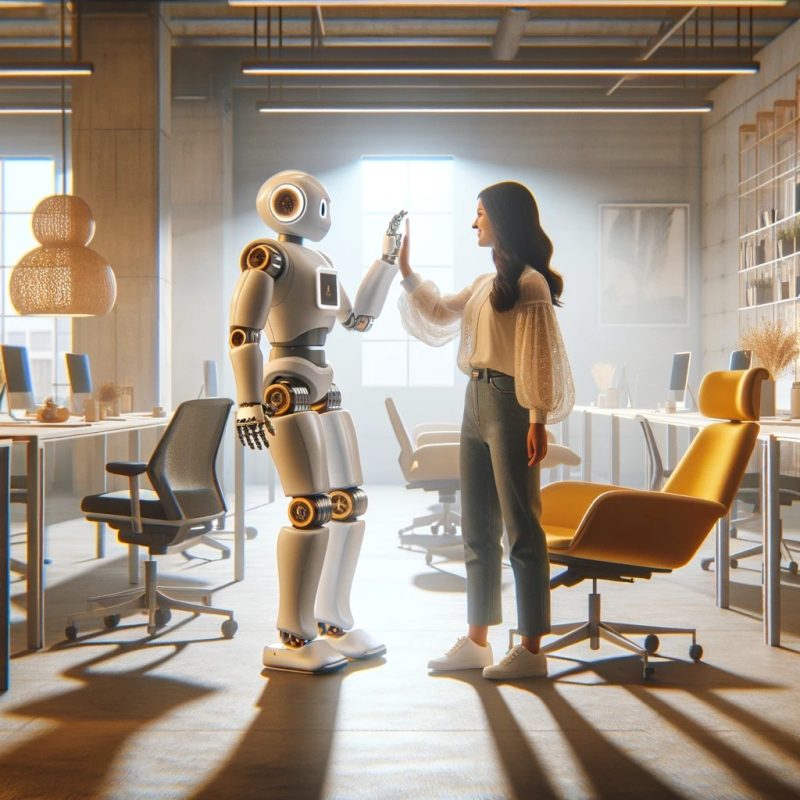
Source: DALL·E 3, prompt: Marta M. Kania (https://www.linkedin.com/in/martamatyldakania/)
Training and developing employees’ skills in the AI era
Implementing AI in the enterprise is not just a matter of technology; it is first and foremost a matter of people and developing their skills. It is therefore crucial to invest in upgrading employees’ skills to use the new tools effectively.
Companies are already reporting strong demand for data analysts, AI specialists, and information security professionals. The number of job posts for these professionals has increased by an average of 17% over the past two years. At the same time, the need for training for all employees is becoming more urgent. It is estimated that up to 60% of the workforce will need it by 2027.
Training should focus on both the technical use of AI tools and the development of the soft skills needed to work effectively with artificial intelligence. To use AI in the workplace, employees need to learn how to:
- communicate effectively with AI, including creating prompts and “natural language programming”,
- critically evaluate AI recommendations,
- understand the technology’s limitations,
- deal with errors made by AI systems.
In addition, training will help them understand how AI can support their daily work. This will make AI a strong ally for them, not a threat.
How is AI changing the approach to recruitment and talent management?
AI will affect employees and the entire process of managing people in organizations. New technologies are already starting to support HR departments.
First, the initial hiring process will increasingly be supported by algorithms, giving recruiters more time to talk to candidates. In addition, AI systems such as recruitment chatbots will help set up appointments or ask candidates clarifying questions.
At the same time, however, the use of AI in recruitment poses certain risks. It is therefore important that systems are transparent and do not discriminate against potential employees. In the European Union, regulations (including the AI Act) are already being implemented to ensure greater control over the algorithms used in recruitment.
Strategies for implementing AI in small and medium-sized enterprises
Smaller companies can benefit surprisingly much from harnessing the potential of AI. The key, however, is to implement the solutions gradually and tailor them to specific needs.
First, consider automating simple, repetitive office tasks to relieve the workload. In addition, AI algorithms can support operational activities such as customer service, marketing, or sales.
At the same time, new tools should be introduced gradually to give people time to get used to the changes. You can start with small pilot projects and expand the scope of AI later.
Summary: AI and the future of work
In summary, the impact of AI on the labor market will be enormous. New AI-related roles will emerge, and the skills required of employees will change, as will the approach to recruiting and talent management. Some jobs will disappear, but new, more creative ones will be created. It will be crucial to invest in developing the skills of the workforce and to gradually implement AI so that it supports people, not replaces them. Despite the inevitable challenges, experts predict that humans and AI will ultimately create the future of the workplace.

If you like our content, join our busy bees community on Facebook, Twitter, LinkedIn, Instagram, YouTube, Pinterest, TikTok.
Author: Robert Whitney
JavaScript expert and instructor who coaches IT departments. His main goal is to up-level team productivity by teaching others how to effectively cooperate while coding.
AI in business:
- Threats and opportunities of AI in business (part 1)
- Threats and opportunities of AI in business (part 2)
- AI applications in business - overview
- AI-assisted text chatbots
- Business NLP today and tomorrow
- The role of AI in business decision-making
- Scheduling social media posts. How can AI help?
- Automated social media posts
- New services and products operating with AI
- What are the weaknesses of my business idea? A brainstorming session with ChatGPT
- Using ChatGPT in business
- Synthetic actors. Top 3 AI video generators
- 3 useful AI graphic design tools. Generative AI in business
- 3 awesome AI writers you must try out today
- Exploring the power of AI in music creation
- Navigating new business opportunities with ChatGPT-4
- AI tools for the manager
- 6 awesome ChatGTP plugins that will make your life easier
- 3 grafików AI. Generatywna sztuczna inteligencja dla biznesu
- What is the future of AI according to McKinsey Global Institute?
- Artificial intelligence in business - Introduction
- What is NLP, or natural language processing in business
- Automatic document processing
- Google Translate vs DeepL. 5 applications of machine translation for business
- The operation and business applications of voicebots
- Virtual assistant technology, or how to talk to AI?
- What is Business Intelligence?
- Will artificial intelligence replace business analysts?
- How can artificial intelligence help with BPM?
- AI and social media – what do they say about us?
- Artificial intelligence in content management
- Creative AI of today and tomorrow
- Multimodal AI and its applications in business
- New interactions. How is AI changing the way we operate devices?
- RPA and APIs in a digital company
- The future job market and upcoming professions
- AI in EdTech. 3 examples of companies that used the potential of artificial intelligence
- Artificial intelligence and the environment. 3 AI solutions to help you build a sustainable business
- AI content detectors. Are they worth it?
- ChatGPT vs Bard vs Bing. Which AI chatbot is leading the race?
- Is chatbot AI a competitor to Google search?
- Effective ChatGPT Prompts for HR and Recruitment
- Prompt engineering. What does a prompt engineer do?
- AI Mockup generator. Top 4 tools
- AI and what else? Top technology trends for business in 2024
- AI and business ethics. Why you should invest in ethical solutions
- Meta AI. What should you know about Facebook and Instagram's AI-supported features?
- AI regulation. What do you need to know as an entrepreneur?
- 5 new uses of AI in business
- AI products and projects - how are they different from others?
- AI-assisted process automation. Where to start?
- How do you match an AI solution to a business problem?
- AI as an expert on your team
- AI team vs. division of roles
- How to choose a career field in AI?
- Is it always worth it to add artificial intelligence to the product development process?
- AI in HR: How recruitment automation affects HR and team development
- 6 most interesting AI tools in 2023
- 6 biggest business mishaps caused by AI
- What is the company's AI maturity analysis?
- AI for B2B personalization
- ChatGPT use cases. 18 examples of how to improve your business with ChatGPT in 2024
- Microlearning. A quick way to get new skills
- The most interesting AI implementations in companies in 2024
- What do artificial intelligence specialists do?
- What challenges does the AI project bring?
- Top 8 AI tools for business in 2024
- AI in CRM. What does AI change in CRM tools?
- The UE AI Act. How does Europe regulate the use of artificial intelligence
- Sora. How will realistic videos from OpenAI change business?
- Top 7 AI website builders
- No-code tools and AI innovations
- How much does using AI increase the productivity of your team?
- How to use ChatGTP for market research?
- How to broaden the reach of your AI marketing campaign?
- "We are all developers". How can citizen developers help your company?
- AI in transportation and logistics
- What business pain points can AI fix?
- Artificial intelligence in the media
- AI in banking and finance. Stripe, Monzo, and Grab
- AI in the travel industry
- How AI is fostering the birth of new technologies
- The revolution of AI in social media
- AI in e-commerce. Overview of global leaders
- Top 4 AI image creation tools
- Top 5 AI tools for data analysis
- AI strategy in your company - how to build it?
- Best AI courses – 6 awesome recommendations
- Optimizing social media listening with AI tools
- IoT + AI, or how to reduce energy costs in a company
- AI in logistics. 5 best tools
- GPT Store – an overview of the most interesting GPTs for business
- LLM, GPT, RAG... What do AI acronyms mean?
- AI robots – the future or present of business?
- What is the cost of implementing AI in a company?
- How can AI help in a freelancer’s career?
- Automating work and increasing productivity. A guide to AI for freelancers
- AI for startups – best tools
- Building a website with AI
- OpenAI, Midjourney, Anthropic, Hugging Face. Who is who in the world of AI?
- Eleven Labs and what else? The most promising AI startups
- Synthetic data and its importance for the development of your business
- Top AI search engines. Where to look for AI tools?
- Video AI. The latest AI video generators
- AI for managers. How AI can make your job easier
- What’s new in Google Gemini? Everything you need to know
- AI in Poland. Companies, meetings, and conferences
- AI calendar. How to optimize your time in a company?
- AI and the future of work. How to prepare your business for change?
- AI voice cloning for business. How to create personalized voice messages with AI?
- Fact-checking and AI hallucinations
- AI in recruitment – developing recruitment materials step-by-step
- Midjourney v6. Innovations in AI image generation
- AI in SMEs. How can SMEs compete with giants using AI?
- How is AI changing influencer marketing?
- Is AI really a threat to developers? Devin and Microsoft AutoDev
- AI chatbots for e-commerce. Case studies
- Best AI chatbots for ecommerce. Platforms
- How to stay on top of what's going on in the AI world?
- Taming AI. How to take the first steps to apply AI in your business?
- Perplexity, Bing Copilot, or You.com? Comparing AI search engines
- ReALM. A groundbreaking language model from Apple?
- AI experts in Poland
- Google Genie — a generative AI model that creates fully interactive worlds from images
- Automation or augmentation? Two approaches to AI in a company
- LLMOps, or how to effectively manage language models in an organization
- AI video generation. New horizons in video content production for businesses
- Best AI transcription tools. How to transform long recordings into concise summaries?
- Sentiment analysis with AI. How does it help drive change in business?
- The role of AI in content moderation
